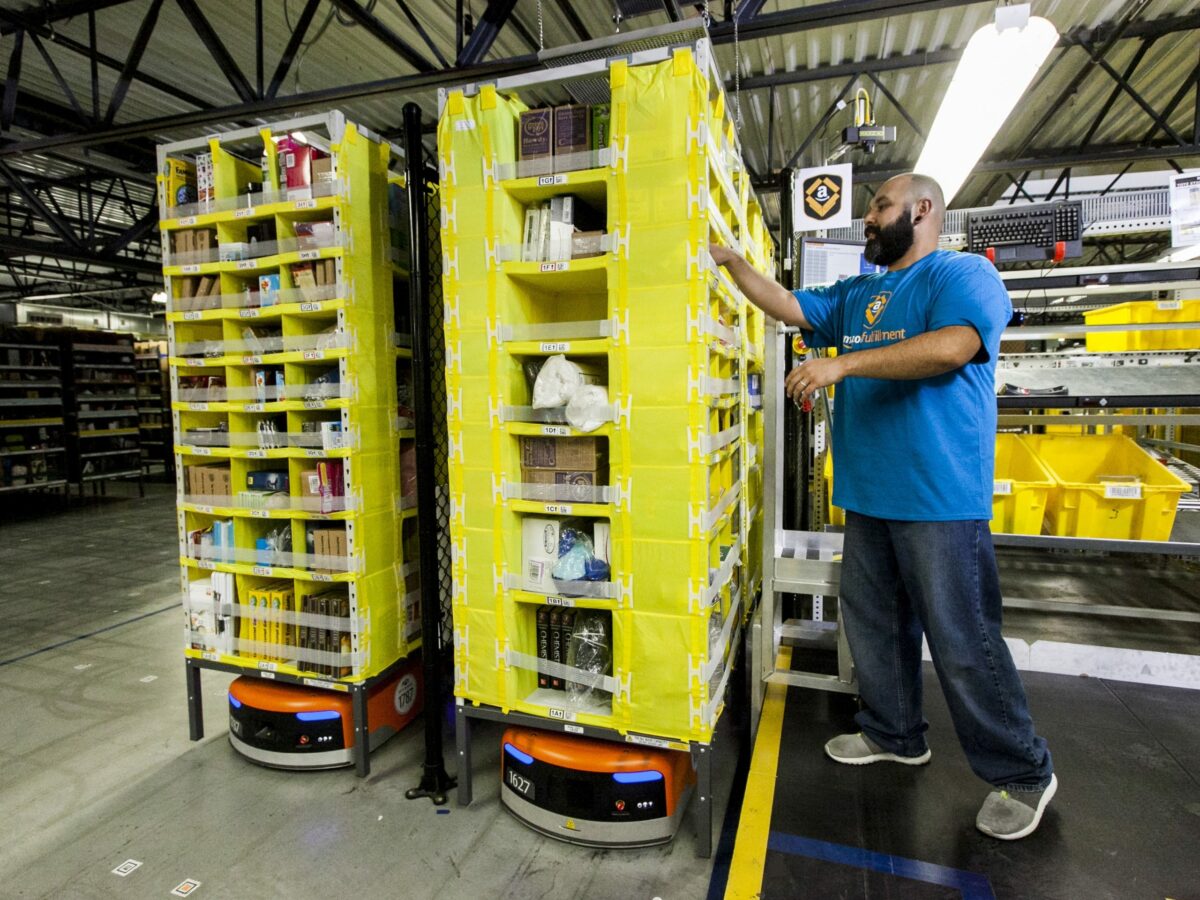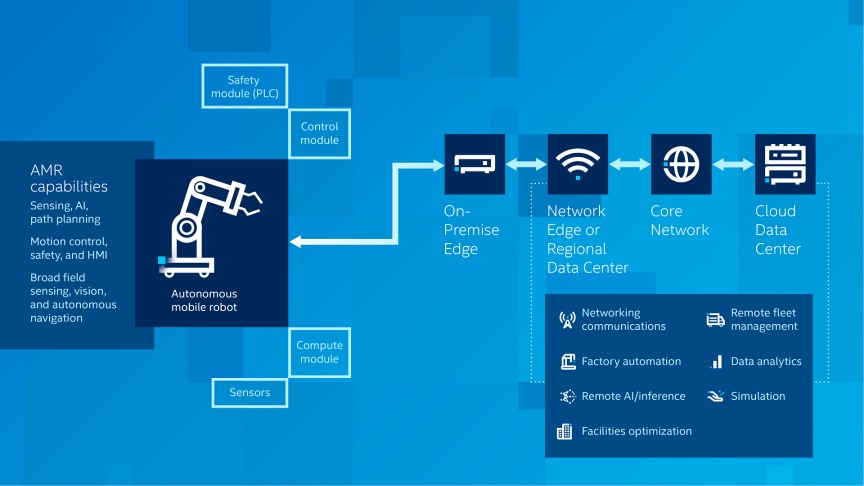Leadership in factory automation — Autonomously rolling through the fourth industrial revolution

Today in Leadership in factory automation, Sercan Altun looks at the importance of data in the current industrial era, as well as the increasingly prominent role of mobile robotics.
The advancements in previous Industrial Revolutions (IRs) are nowhere near to the progress so far in IR 4.0, which is only just getting started. What makes the current revolution stand apart can be observed by a mere glance at its impact in industries, as varied as home automation and space technology.
Data is at the heart of it. One example is the current trend in motorsports to use data collected from cars via the Internet of Things (IoT). The advantages of having access to real time data at a teams’ headquarters miles away from the tracks on which the super-fast cars compete wouldn’t be imaginable in previous IRs.
Looking at partnerships struck between teams competing in various motorsports and the big tech companies gives us a flavour of what the IoT enables in different industries. The cooperation between different organisations such as AWS-F1 in the highest class of international auto racing has also provided better experiences for both teams and spectators, enabled by the power of data.
In addition to the benefits of using data in the IoT sphere, in the industrial automation landscape, our manufacturers have been reaping huge benefits by simply using data collected by sensors and actuators thanks to IO-Link technology.
The effects of possessing a pool of data streaming from the gears on shop floor to the edge and possibly to the cloud have brought a new era with massive benefits, also opening new doors to Cloud Manufacturing (CM). The raw data in hand, whether stored in cloud or on-premise, makes little sense on its own, but it can be made useful thanks to the progress in the field of Machine Learning (ML) and Artificial Intelligence (AI.)
The line that has been blurred between Information Technology (IT) and Operational Technology (OT) has been opening up huge opportunities for many manufacturers in factory automation.

Previous IRs delivered eye-opening possibilities through control systems enabled Programmable Logic Controllers (PLC) and Distributed Control Systems (DCS) that helped many industries automate systems and mainly suited high-volume, low-cost, low-mix production. Nowadays, the Industrial Internet of Things (IIoT, IR 4.0) helps many industries and sectors keep up with a demand for customised, high-value products, and helps generate growth through the combination of OT and IT.
The use of automation and data enabled by the IIoT is delivering data-driven smart manufacturing, which is encouraging all kinds of manufacturers to become advanced manufacturers.
There is no industry where the utilisation of new technologies for factory automation could be more pertinent than in intra-logistics. Freeing up resources by automating simple tasks like moving things around on the factory floor leaves more time and energy to be directed at other tasks to optimise productivity. Today there are several ways to meet this demand, for example new technologies such as Automated Guided Vehicles (AGVs), unmanned forklifts, collaborative robots (cobots) and cost-effective Autonomous Mobile Robots (AMRs.) These have been proliferating in the warehouse and logistics industries as the e-commerce sector booms, driven by consumer behaviour changes that require faster adaptation and greater supply chain flexibility.
In particular, developments in the AMR industry are worth applauding, with the integration of latest on-board Lidar 2D and 3D sensors to avoid collisions, and fast processors opening up natural navigation possibilities by mapping the environment, planning dynamically new routes in case of obstacles getting in the way, and mapping the new routes, and most importantly unburdening workers from repetitive arduous tasks. The various AMRs today have been “bread and butter” in the warehouse operations of various companies given the flexibility, easy commissioning and advanced navigation that comes with lower investments and quicker RoIs.

System components that work together to enable AMRs
Given the many challenges for manufacturers — the wake of the V-shape recovery from the global pandemic, choked global supply chains, skill shortages exacerbated by the “Great Resignation”, and an ageing population, the adaptation to the new disruptive technologies is a must. This is true not just for multinationals, but for SMEs trying to stay ahead of local competitors.
By implementing the above technologies, depending on the specific needs of the processes, profitable and sustainable business models can be established despite the many uncertainties.
It is incumbent on all business and public policy stakeholders to help our manufacturers lower their waste, and increase their productivity, quality and safety as they adapt.
Without adopting advanced manufacturing techniques and practices through data to make better and faster decisions, there is almost zero chance for our manufacturers to address production, skills, and sustainability challenges.
To be able to compete with other nations preparing themselves, for the sake of their own economic sovereignty, to innovate and adapt their industries, implementation strategies will be the backbone of the new green economy with millions of new jobs to achieve growth and success in our inevitable transition to a zero-carbon economy.
Picture: Amazon fulfilment centre robots (www.allaboutlean.com)
Sercan Altun is an electronics engineer and technical sales engineer at Pepperl+Fuchs (Australia) with extensive knowledge in the field of digitisation of production systems, the industrial internet of things (IIoT) and advanced manufacturing processes. Pepperl+Fuchs is a company specialised in factory and process automation.
@AuManufacturing’s editorial series – Leadership in factory automation – is brought to you with the support of Bosch Australia Manufacturing Solutions, and the Innovative Manufacturing Cooperative Research Centre.


Subscribe to our free @AuManufacturing newsletter here.
Topics Analysis and Commentary
@aumanufacturing Sections
Analysis and Commentary Awards Defence Manufacturing News Podcast Technology Videos






